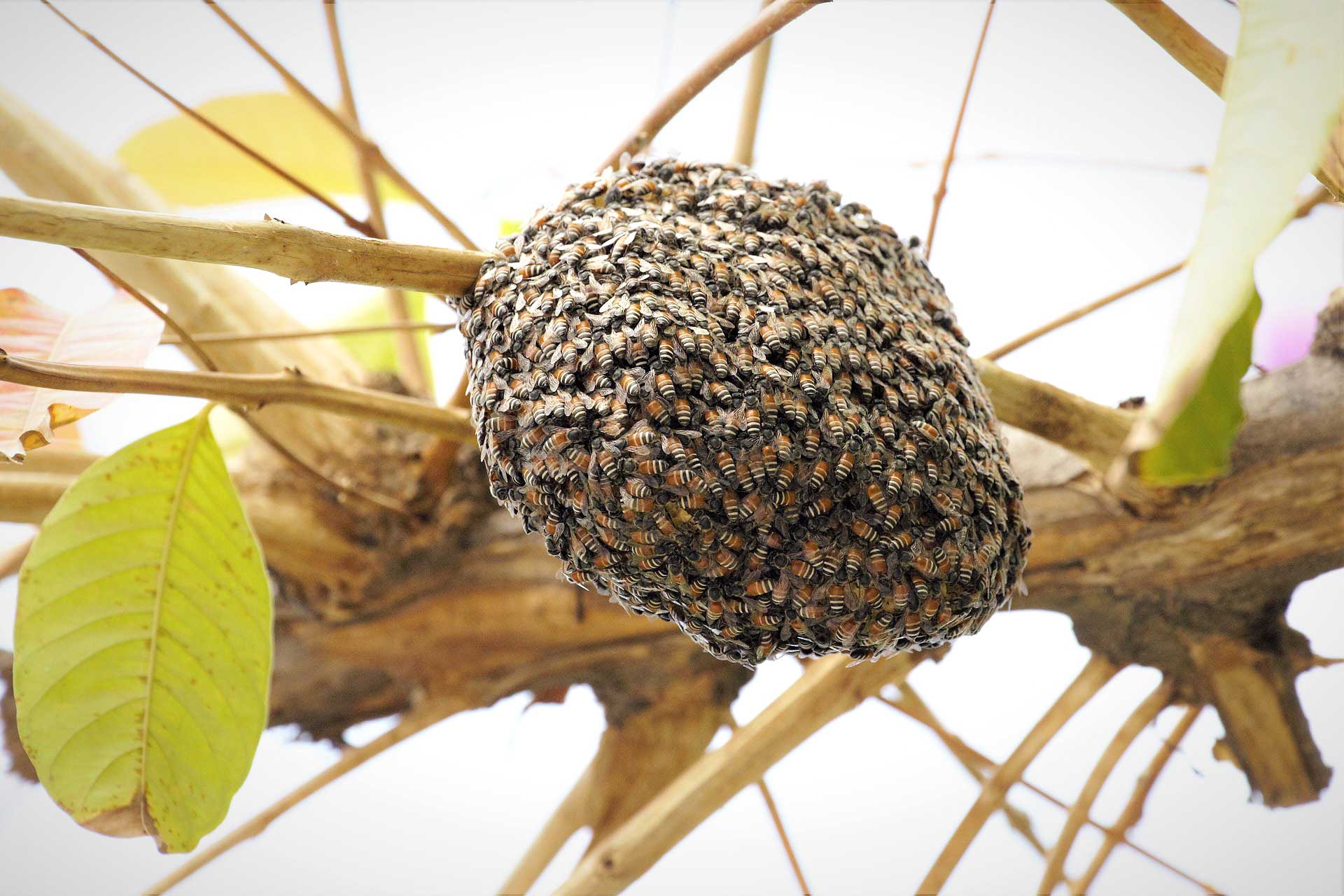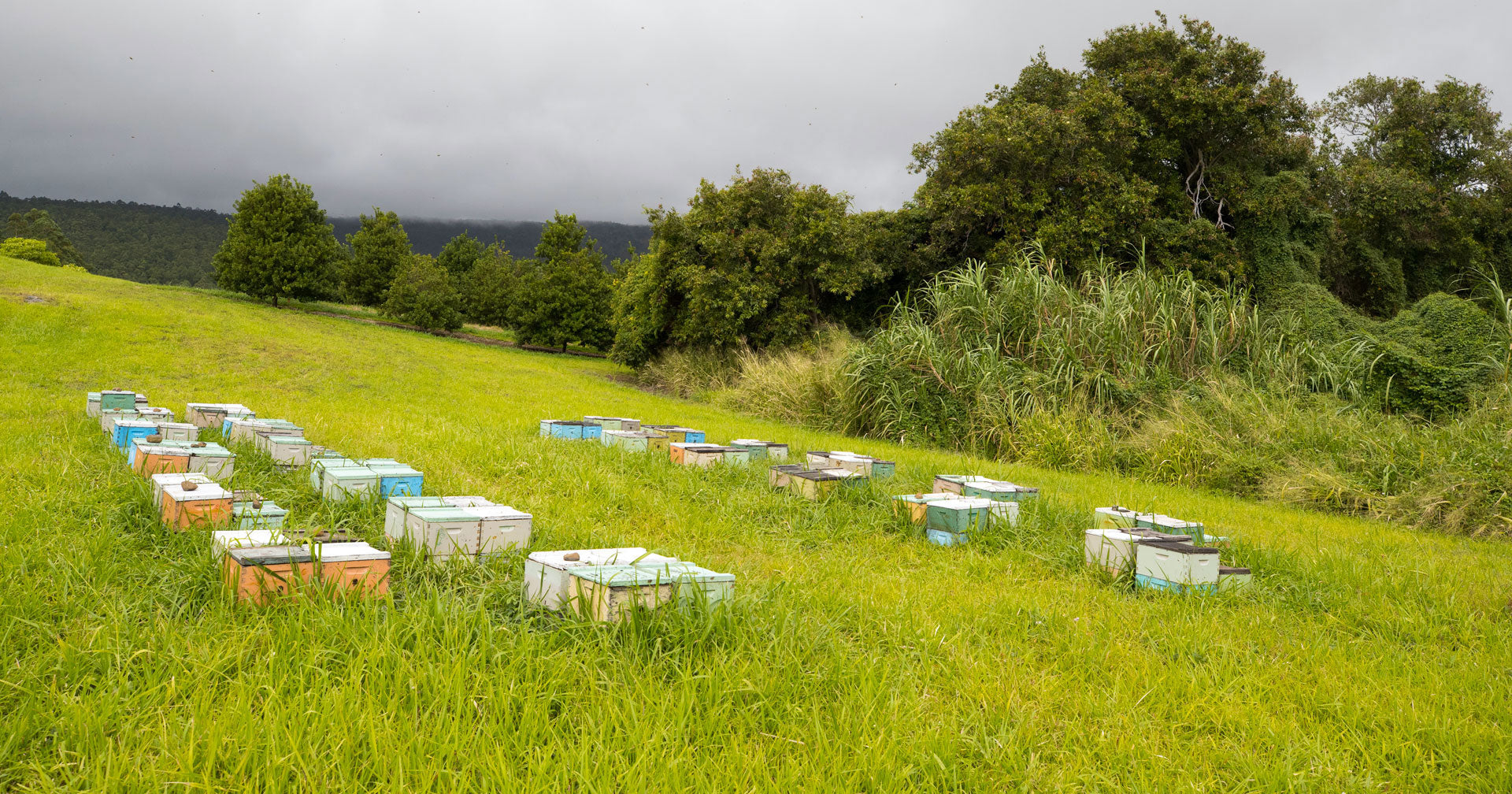Certainly you’ve known what a bee is since you were a kid just playing outside. You have probably been eating honey since then as well and connected the two. Maybe you even noticed that not all bees look or bee-have the same. And that would be a very accurate observation.
We currently have over 20,000 known species of bees in the world and scientists continue to discover new bee species almost yearly. That's quite a lot of bee-o-diversity! Surprisingly, most of these species don’t even make any honey at all.
What is the Difference Between Native Bees, Wild Bees, and Honey Bees?
Just like all animals, bees are categorized into a taxonomic hierarchy. Honey bee is the common name for a specific type of bee while a native and wild bee broadly refers to where and how a bee lives and describes many types of bees.
Despite humans being most familiar with the honey bee, they represent just a tiny fraction of the entire bee genera—and they aren’t even the only type of bees that make honey! Though honey bees do produce the largest amount of honey by far.
Learn More About which Bees Make Honey
Honey production is one thing that sets honey bees apart from other types of bees, but are honey bees wild? And what is their natural habitat?
Let’s find out by defining the difference between native and wild:
Native is used to describe species that are indigenous to a given geographical region. This is true for any plant or animal and means that the species exists in the particular area naturally—not due to human activity. Native bees are important because they are uniquely adapted to interact with their specific environment and to pollinate the local flora, playing an important role in maintaining the delicate balance of the native ecosystem.
Wild is used to describe species that are not domesticated and live and survive out in the natural environment—or simply “in the wild.” This typically goes hand-in-hand with the species being native, but there is an important distinction. There are cases that a native bee that was once wild has become domesticated but may still live in the area it is native to. The European honey bee is an example of a domesticated species that is extinct in the wild1 but is kept by beekeepers in the area it is native to (in Europe).
Another thing to note is that domesticated bees (or animals) that get loose and form their own colonies “in the wild” are still not technically wild. We have another name for that instead: feral. Feral honey bees may not thrive as well as managed honey bees because the species has come to rely on husbandry—or their relationship with humans—having been kept by beekeepers for thousands of years!
Characteristics of a Honey Bee
Now that we are clear that honey bees are not wild and are native to certain areas of the world, but not to the United States or North America, we can take a deeper look at what else sets a honey bee apart from other bees in your backyard or across the globe.
Social Order
Honey bees are eusocial animals with conglomerative nests and a single fertile female, the queen. In other words, they work together through an intricately designed hierarchy, build remarkable hives, and protect their incredibly precious queen.
Husbandry
A husbandry, or a relationship between humans and bees, is required to keep honey bees thriving. We care for their hives and their terroir, and they provide a surplus of honey for us.
Bee-haviors
- Gathers nectar
- Pollinates flowers
- Stores their food source (makes honey)
- High production honey
- Feeds their colony
- Live in hives
Appearance
We typically see them as yellow-banded with furry bodies, and they have stingers to protect their colony—though only female bees have stingers, which are the worker bees you’ll see buzzing from flower to flower. Male honey bees, called drones, can’t sting!
Characteristics of Wild & Native Bees
Wild bees make up the vast majority of bee species that scientists have identified and include other familiar types of bees like the bumble bee and carpenter bee to lesser known bees like the cukoo bee or exotic bees like the orchid bee. Wild bees are incredibly diverse and each unique species is a crucial member of the ecosystem it belongs to!
Social Order
Some wild, native bees live in small hives and only produce enough honey to feed their hive. Many others are solitary, burrow into the ground, and don't produce any honey. Solitary bees often prefer to create nests near other solitary bees. You may see 200 different solitary bee nests together. Although they live close, they don't share quarters or have a worker hierarchy. Their resources are used to feed their young and procreate, and that's it.
Husbandry
Wild bees are defined by the lack of care, cultivation or breeding by humans. They exist in the environment naturally just like other wild animals. Though that isn't to say they don't depend on us to conserve their habitat and protect them from herbicides and pesticides. Humans, on the other hand, do rely on wild, native bees to pollinate many of our food sources and keep other native plants from going extinct. Take the blueberry bee for example which is an important pollinator to blueberry fields in the United States. The native bees in a given area are often very specialized pollinators that cannot be replaced.
Bee-haviors
- Pollinate! (Including plants we rely on for food, like mangoes and blueberries.)
- Gathering nectar
- Laying eggs
- Feeding their pupa
- Procreating
- Produce a smaller amount of honey
- Create nests in a variety of places; leaf litter, logs, cracks, into the ground
Appearance
The color and size of wild bees are also bee-o-diverse. Some are blue, black, brown, metallic green, or red. And they can be as small as 0.08 of an inch up to 1.6 inches in length. And here's another incredible fact: many bees don't even have stingers! We call this kind of bee a stingless bee. Their common name is "stingless honeybees," but they are more technically known as Melipona. The United States knows no native species of Melipona bee, but our neighbors on the southern border; Mexico and Central America, are known for having 16 unique species of Melipona.
Read our Senior Bee Docent's First-Hand Experience with Melipona
New Insight into Your Backyard
The next time you see bees visiting your garden or in that clover field near your house you just might be able to determine if they’re native or belong to a nearby beekeeper, like the European honey bees that we raise on our farm here at Big Island Bees. Where a bee lives, its role in a hive, whether or not it has a stinger, its gender, its relationship (or lack thereof) to humans, and countless other variables account for the wondrous variations of these amazing insects.
Learn How You Can Help Your Local Bees
1 https://en.wikipedia.org/wiki/Western_honey_bee
Joe O'Brien, the author of this post, is our Senior Bee Docent and is known for his enthusiasm for and knowledge about all things bees. If you ever find yourself on the Big Island of Hawaii, he'd love to show you more about bees with an up-close and personal look into a beehive on our Beekeeping Tour!
Big Island Bees is an artisanal producer of three unique Hawaiian honey varietals. Our honey is raw and unfiltered and we tend to our own hives with deliberate care for the health of the bees and environment – without the use of chemical miticides or artifical feeds. We have proudly been the first place recipient of the Good Foods Awards in 2021 and 2022 in the honey category.



